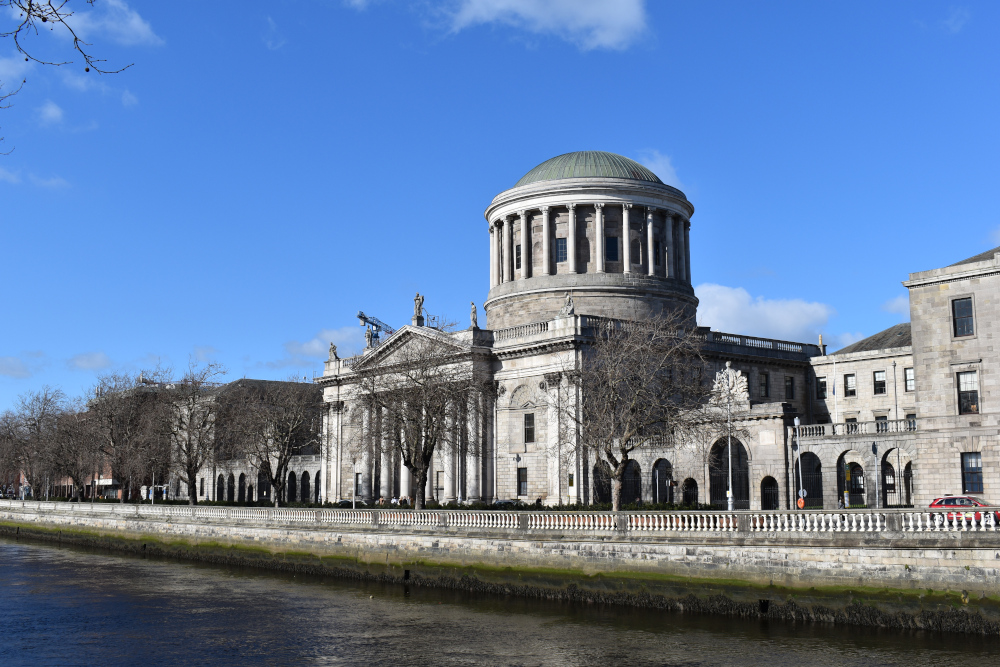Supreme Court: Common law defence of lawful use of force abolished by 1997 legislation

The Supreme Court has determined that the common law defence to murder of “lawful use of force” as set out in The People (AG) v Dwyer [1972] IR 416 was abolished by s.22 of the Non-Fatal Offences Against the Person Act 1997 and that the test in s.18 of that Act now applies instead.

About this case:
- Citation:[2024] IESC 44
- Judgment:
- Court:Supreme Court
- Judge:Ms Justice Aileen Donnelly
Delivering the lead judgment for the Supreme Court, Ms Justice Aileen Donnelly stated: “The Non-Fatal Offences Against the Person Act, 1997, abolished the common law offences of assault and battery and created new offences of assault, assault causing harm and causing serious harm. It provided for the defence of lawful use of force and abolished any defence available at common law in respect of the use of force.”
Background
On 7 July 2018, the appellant stabbed Mr Patrick O’Connor six times in the neck, back, chest and arms. Mr O’Connor died as a result of his injuries.
At trial in the Central Criminal Court, the defence characterised the interaction between the men as a fight over money owed by the appellant to the deceased, whereas the prosecution contended that it was a one-sided attack. The appellant raised the defence of self-defence, contending that he “honestly, genuinely, perhaps mistakenly, believed that he was under threat of an imminent attack”.
The jury did not believe that the appellant held the honest belief alleged and he was convicted of murder contrary to common law and as provided by s.4 of the Criminal Justice Act 1964 on 10 September 2020. On 2 October 2020, he was sentenced to the mandatory penalty of life imprisonment.
The appellant unsuccessfully appealed his conviction to the Court of Appeal, arguing that the trial judge misdirected the jury on The People (AG) v Dwyer [1972] IR 416 by pointing it towards an objective assessment of whether the degree of force used was reasonable in the circumstances as they existed, rather than as the appellant perceived them to be. The appellant suggested that if the correct charge had been given to the jury, he would have had the opportunity to avail of a full defence.
The appellant maintained that while Dwyer makes it clear that in assessing whether self-defence provides a full defence to murder the amount of force used is to be objectively assessed, it was not clear whether force should be assessed by reference to the circumstances as they actually were or by reference to the circumstances as the accused person believed them to be.
Before the Court of Appeal, the appellant relied on the present statutory position in respect of the use of non-fatal force in self-defence as provided for in ss.18, 19 and 20 of the Non-Fatal Offences Against the Person Act 1997 and in respect of the use of force, fatal and non-fatal, in defence of a dwelling as provided for in s.2 of the Criminal Law (Defence and the Dwelling) Act 2011.
The appellant appealed to the Supreme Court, with the central question being whether Dwyer or the provisions of s.18 of the 1997 Act apply when a person defending a charge of murder claims to have been acting in self-defence.
The Supreme Court
Ms Justice Donnelly considered the common law position on self-defence in cases of murder as set out in Dwyer, finding that the defence required the force used by an accused to be objectively reasonable in the circumstances as they were, rather than as they were perceived by the accused.
The judge then considered the statutory position in s.18 of the 1997 Act, concluding that the test therein was partly objective and partly subjective, and clarifying that “s. 18(1) and s. 1(2) when read together require a focus on the subjective belief of the accused as to the overall necessity to use the force that they actually used. Thus, while ‘reasonable’ connotes an objective test, the entire test is underpinned by the requirement that the accused must have an honest belief that the circumstances necessitated the use of the force to which they actually resorted. It could never be objectively reasonable for a person to use force in self-defence if the person using the force did not themselves believe that the force used was necessary for self-defence.”
The Supreme Court observed: “The enactment of the 1997 Act created new offences of assault and also new defences to assault. More relevantly, the Act created a specific statutory defence of lawful use of force. Not only was there a new way of thinking about the act that the victim of the impugned acts may have been engaged in (was it an offence, even if no longer felonious?), but the nature of the activity of the person who inflicted the violence would come to be assessed differently if an assault charge was proffered.”
Ms Justice Donnelly considered that the “start of the enquiry into any count of homicide — murder or manslaughter — is whether there is an unlawful killing, and that will arise where there has been a criminal act either through an assault or through criminal negligence… Where unlawful killing is established, the next part of the enquiry is whether the person intended to kill or cause serious injury; such an enquiry is not needed in a charge based upon criminal negligence where no such specific intent occurs. Looked at from that perspective, the provisions of the 1997 Act must form the basis for the assessment of that unlawful killing.”
The judge concluded that “the provisions of the 1997 Act must form the basis for the assessment of that unlawful killing. This is a necessary implication because the 1997 Act changed the most fundamental aspect of homicide where the unlawful killing is based upon an assault, thus defining what is an assault is central to that analysis.”
Having regard to the plain and ordinary meaning of the 1997 Act, Ms Justice Donnelly opined that there was nothing to limit the lawful use of force defence to only non-fatal offences and so there was nothing restricting the abolition of the common law defence by s.22 thereof to non-fatal cases.
Accordingly, the Supreme Court found that the defence of lawful use of force in s.18 of the 1997 Act applies to murder. Noting that the test is partly subjective and partly objective, the court explained that the defence is available as a complete defence where a person has an honest (even if unreasonable) belief that the circumstances necessitate the use of force and uses such force as is objectively as well as subjectively reasonable in the circumstances that the accused believed them to be.
As to whether the accused held an honest belief, Ms Justice Donnelly highlighted that the court or jury must have regard to whether there is the presence or absence of reasonable grounds for that belief in conjunction with any other relevant matters, but warned that the issue remains whether the accused genuinely held that belief.
Ms Justice Donnelly summarised that in a charge of murder, if the accused honestly believed that they had to use lethal force to defend himself, but its use was objectively unreasonable in the circumstances as the accused believed them to be, then the correct verdict is one of manslaughter as, relying on Dwyer, the accused did not have the subjective intention required to be convicted of murder because their primary intention was self-defence.
The judge noted that if the accused’s belief that the circumstances required use of force was unreasonably held, they may not be entitled to a full acquittal even if they used objectively reasonable force in accordance with their belief, finding that it may then be necessary to ask the jury to assess whether the accused acted in a criminally negligent i.e. grossly negligent, manner in coming to the unreasonable conclusion. If so, then the appropriate verdict is one of manslaughter.
However, s.18 could not avail the appellant as his claim of “honest belief” had been rejected by the jury.
Conclusion
Accordingly, the Supreme Court dismissed the appeal.
Director of Public Prosecutions v. Crawford [2024] IESC 44







